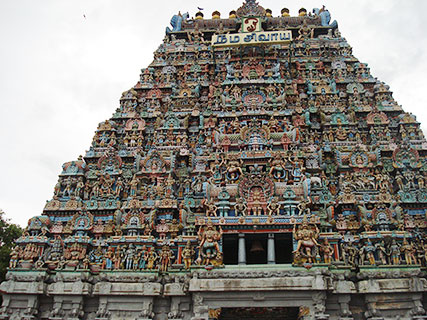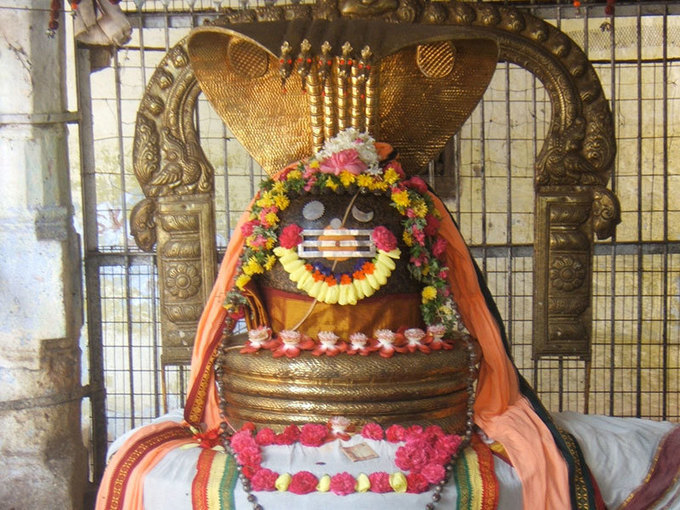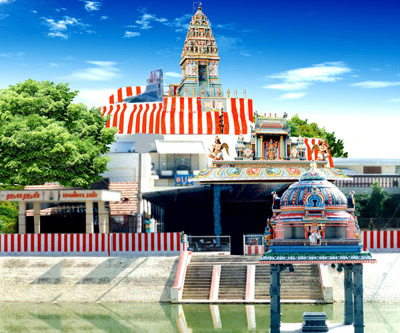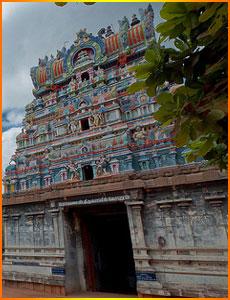Main God:
Arulmigu Kalyana Pasupatheswarar
Location:
Arulmigu Kalyana Pasupatheswarar Temple
Sannathi Street,
Karur – 639 001
Festivals:
Arulmigu Kalyana Pasupatheswarar Temple – Festival
Chithirai :
Chithirai Festival begins with Flag Hoist and Car riding on the day of Hastha Nakshthra and ends in the day of Chithra Nakshathra with Holy bothing in the river at morning and dehoisting the flag the evening. During this Ten days of ceremony the Uthsavamoorthis (festive deities – Siva, Vishnu) will be taken out on different types of Vahanas for dharsan.
Aadi :
The 18th day of Aadi Tamil Month is the day for Holy both in river Kaviri. During this function the Uthsavamoorthi will be taken to the river bank and there will be a function called “Deepam” conducted by Thirukovil, at 6.00 P.M. The Last Friday of the Aadi Month is the day of making Decorations to all deities with sandal powder.
Aavani :
The Moola Nakshathra day of Aavani Tamil Month s a day of Siva, Peruman who blesses the living being at the river bank is called Pittu Thiruvizha. Rohini Nakshathra day of Aavani Month is the birthday of Lord Krishna and so called as “Krishna Jayanthi”. These festival is conducted for two days with the procession of Lord Krishna Festive deity.
Aipasi :
Aswini Nakshathra of Aipasi Tamil Month is the day of Annabishekam (Abishekam with cooked rice) to Lord Magudeshwara and Sasti Festival of six days duration which ends with the Soora Samhara. The Seventh day function is the Marriage Ceremony of Lord Muruga with Valli, Devasena.

Karthikai :
Krithika Nakshathra day of Karthigai Tamil Month is the day of “Karthikai Deepam” (Day of light). The last Monday of these month is the day for the “108 Sankabishekam” (conches filled with Kaviri water).
Markazhi :
Thiruvathirai Nakshatra day of Margazhi Tamil Month is the day for Lord Nataraja, Nataraja abishekam is a process of specialized pooja for the dancing Sivaperuman. Procession, Festive deities will be taken out for the public dharshan. The “Ekadhasi” is the day of entering in the Gateway to reach “Vaikuntham” (Heaven of Mahavshnu). This function is followed by the procession of “Uthsavamoorthis”.
Thai :
Pushpa Nakshathra of Thai Tamil Month is the day of “Theerthavizha”
Maasi :
Mahasivarathri is a grand saivaite festival to receive the bless and bliss from the Supreme Diving grace Sivaperuman.
Panguni :
Uthra Nakshathra day of this Panguni Tamil Month is the day of worshiping Lord Muruga.

Monthly festival :
1.Sashti
2.Kiruthigai
3.Prathosam
Worship Timings:
Ushakkala Pooja (Sun Rise Pooja)06:00 A.M
Kaalasandhi Pooja07:00 A.M
Uchikkala Poojaa (Noon Pooja)12:00 Noon
Saayaraksha Pooja (Sunset Pooja)06:00 P.M
Ardhajama Pooja (Night Pooja)08:00 P.M
History :
Legend has it that Siva on sensing the conceit of Brahma as the creator of the world, sent Kamadhenu to Vanji forest in Karur to take up the duty of creation and instructed her to worship the Siva lingam hidden in an anthill at the forest. When Kamadenu was performing the abishekam to the lingam with its milk, her hoof accidentally hit the lingam and injured it. The scar left on the lingam is seen on its back even now as a depression. Kamadenu pleaded guilty. The Lord told her that He will be hailed as Pasupatheeswarar as she worshipped him at this place thus according a special status to Kamadenu. Pleased with this, Kamadenu continued the work of creation. Meanwhile, realising his mistakes Brahma took up severe penance worshipping Lord Siva in order to get back his place in Satya loka. Pleased with his prayers, the Lord restored the power of creation back to Brahma and took Kamadenu along with him. Later on a temple came to be built in that place. There is a brahma theertham created by Brahma to the north of the river Amaravathy.Quite paradoxically, the presiding deity has two consorts, Alankara Valli (also known as Kripanayaki) and Soundara Nayaki and their sannidhis are found to the north of the presiding deity. There is an underpass from the kalyana mantapam, to reach their shrines. While Alankaravalli is a symbol of ‘kriya sakti,’ Soundara Nayaki represents ‘itcha sakti.’ The sannidhi of Alankara Valli with the Sri Chakram and the mount, lion, installed in front of her, faces east, and that of Soundara Nayaki south.

An interesting and authentic tale hangs around the second consort, Soundara Nayaki. It is said that Vadivudaiyal born to a wealthy village official in Appipalayam, at a distance of seven km to the west of Karur, was devoted to Pasupatheeswarar and was bent upon marrying Him. She performed Siva puja daily by observing all religious injunctions. Her parents could not dissuade her. On the other hand, Pasupatheeswarar assured them in their dream that he would marry their daughter on the seventh day of Panguni Uthiram festival, which will be indicated through a floral shower over entire Appipalayam. Vadivudaiyal was meditating when the whole village witnessed the downpour, and a glowing garland bedecked her. She was taken to Pasupatheeswarar temple where she merged with the lord. Even to this date, the utsava idol of Pasupatheeswarar is taken to Appipalayam, on the sixth day in the month of Panguni and returns on the seventh day with Soundara Nayaki.
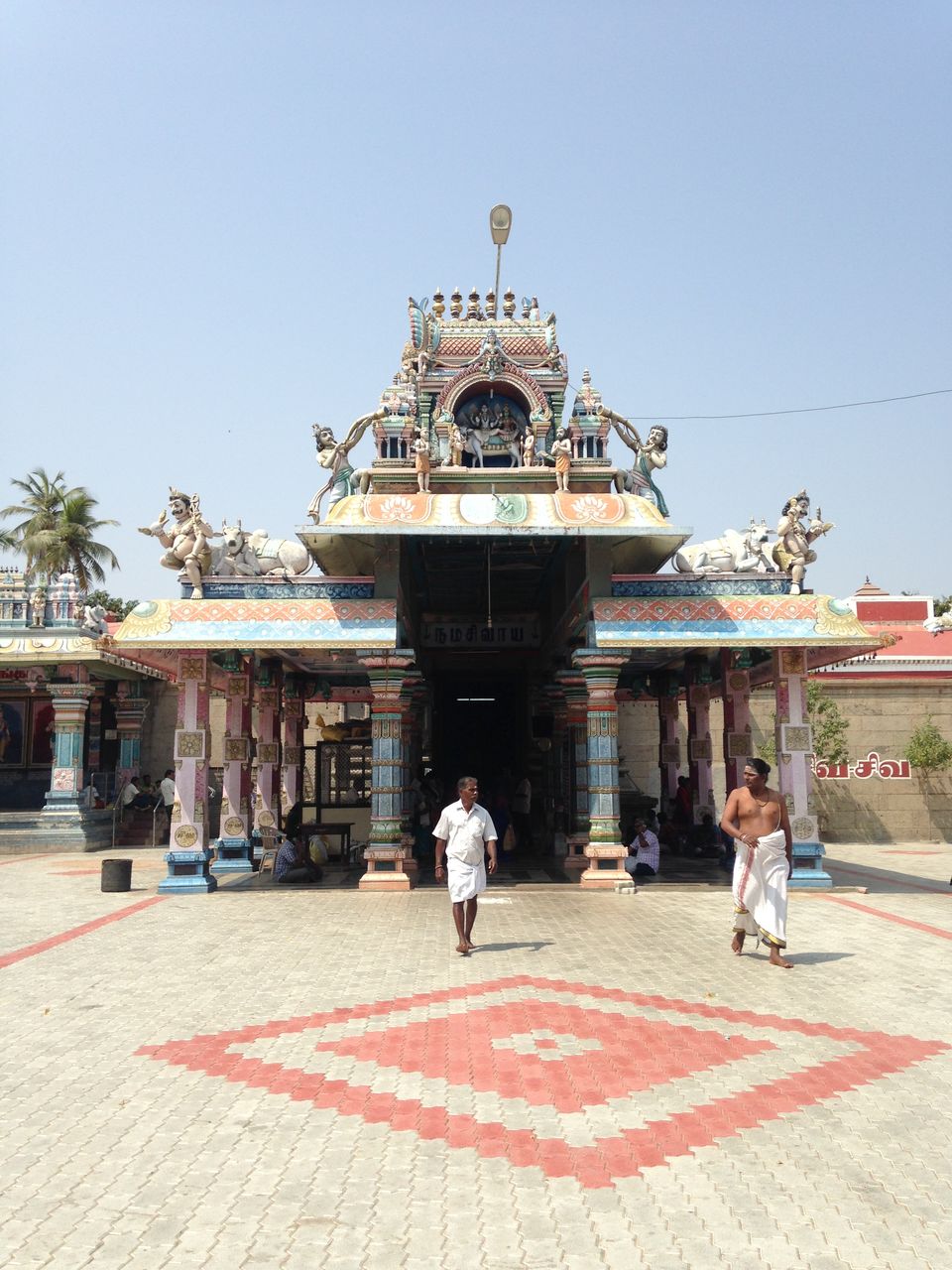
Another noteworthy feature at this temple is the navagrihas. There are separate niches for Surya and Chandra in the kalyana mantapam. The eight-armed Kala Bhairavar in the same mantapam has been cast in a splendid way. At the outer prakaram are, the idols of 63 Nayanmars placed on a raised platform in a row. Out of them, Eripatha Nayanar was associated with this temple during the reign of Chola king, Pugazh Chola, and attained godly state for having killed the coronation elephant of the latter after it snatched the flower basket from an aged devotee of Siva, Sivakamiandar and trampled it. Pugazh Chola became a Nayanmar later. The idols of Eripatha Nayanar, Pugazh Chola, Sambandar and emperor Muchukunda (said to be a Chola king) are found at the corners of the enclosure around flagstaff. At the north-west corner of the outer prakaram is the sannidhi for Shanmugar, who is seen with His consorts. Proceeding further on the northern side of the outer prakaram one can see Pancha lingas.
The sprawling kalyana mantapam is a fine piece of architecture. Its supporting pillars impart a sense of rhythm and symmetry. The original floor must have been replaced with dark spark tiles at some point of time during the kumbabishekam, the last of which was held in 2006. The floor has been divided into three segments. The lower-most has the dwajasthambam, bali peetam and Nandi of a moderate size. The top-most segment leads to maha mantapam, ardha mantapam and garbagriha. The ceiling is splashed with paintings of puranic lore. The lingam, which is said to be swayambu, is five-ft tall. The highlight is the lingam is found tilted to the north. It is said that in order to enable Karuvur Thevar, one of the 18 siddhars, merge with the effulgence of Siva, the Lord tilted himself. At the south-west corner of the outermost prakaram, there is a sannidhi for him with an extended mantapam in front. His image in panchaloka is in ‘padmasana’ posture. Another phenomenon about this temple is that the sunlight falls on the lingam on the 14th, 15th and 16th day in the month of Panguni. In the small prakaram around the garba griha the walls are adorned with the images of Vigneswara, Ardhanareeswara, Brahma and Durga.Saint Thirugnanasambandar, who has visited this temple, has sung in praise of the lord. Those songs have been catalogued under second Thirumurai. Out of the saivite quartet, Sambandar alone has visited this temple. Saint Arunagirinathar has sung in praise of Shanmugar and this sthalam in seven of his Tiruppugazh pieces.
From the inscriptions so far deciphered, it is clear that the temple existed during the reign of the king Rajendra Chola (1012-54 A.D.) since he gifted away land to this temple. For the Kongu Cholas and Kongu Pandyas, the temple was a favourite and , it the drew undivided attention of the Vijayanagar rulers too. Though the sthala vriksham is said to be vanji, only vilva trees are seen now. The temple celebrates a plethora of festivals, the car festival being the most popular. Panguni uthiram is celebrated as brahmotsavam.

The Shivalinga – Anilayappar – is a swayambu that exists of its own. Lord Brahmma worshipped Anilayappar as one in the Ant hill (Puttru in Tamil). Kamadenu (divine cow) worshippped the Lord here. During the worship, the feet of Kamadenu touched the Lord’s head, the symbol of which is still on the Linga.

